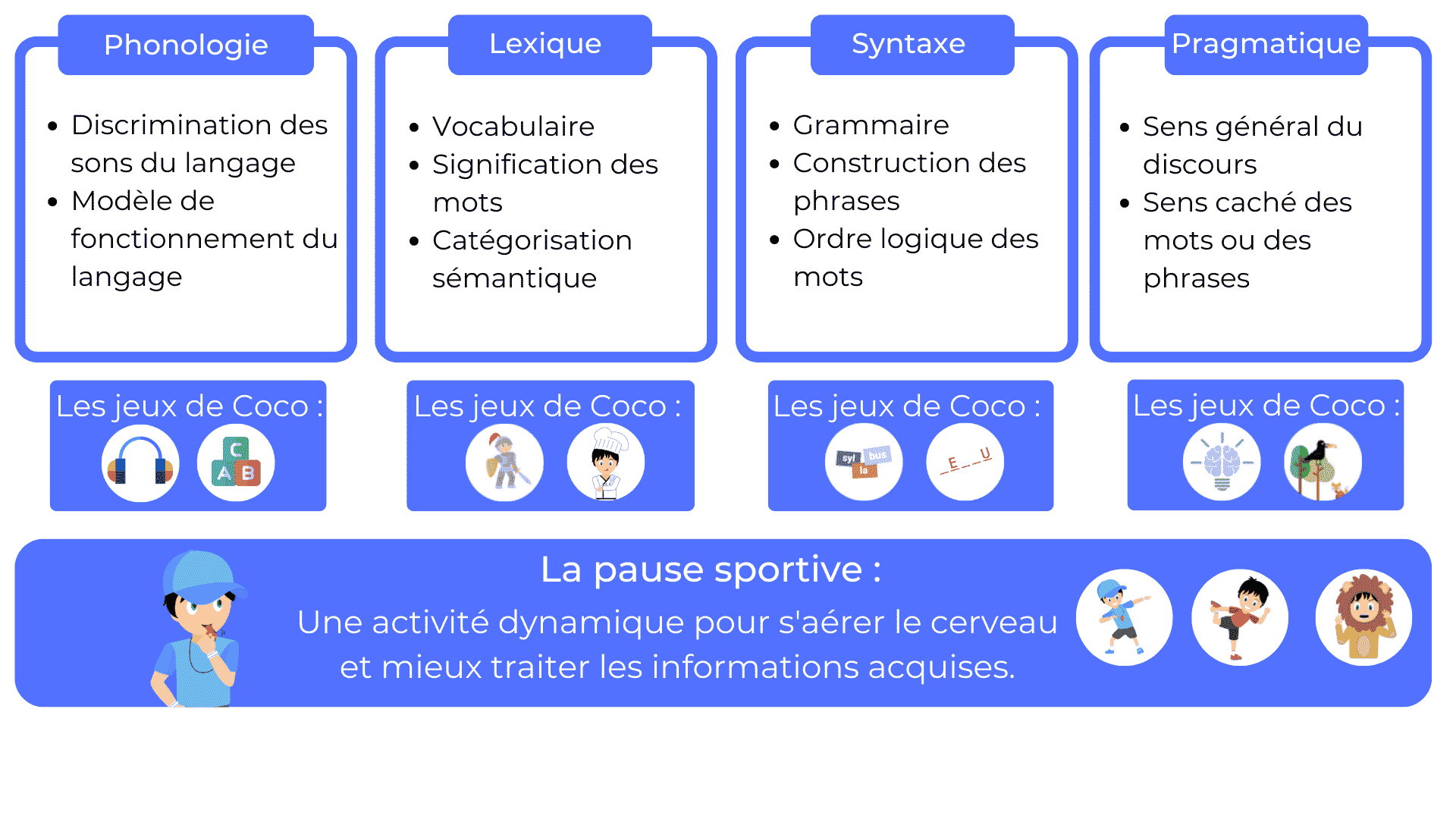Children communicate from birth with movements, crying, looking at each other or with smiles. After only a few months, the child starts to communicate orally, with sounds or with the so-called lallation.
As the child grows, communication continues to improve and it is said that he or she develops “real” language from the age of 1 year.
- 12 months: child begins to use the first words intentionally (before that, he/she can babble). They point to objects to express their needs or thoughts.
- • 12 – 18 months: Vocabulary continues to grow. The child repeats words that he/she hears, especially when they are related to his/her routine or family environment.
- • 18 – 24 months: the child begins to name actions, in addition to objects. At this stage, they can create two-word sentences, combining an action and an object.
- 2 – 3 years: the sentence becomes more complex, and the child begins to put words in the right order. At this age, there is a rapid increase in vocabulary. In addition, the child begins to understand more complex requests or astral concepts.
- • 3 – 5 years: sentence length increases. Comprehension, too, is better. The child can start to make real exchanges with adults or peers. Attention span increases and so does the possibility of listening to longer stories or having discussions with others.
- > Age 5: Language continues to develop in many forms. The child learns grammar, writing and reading.
Language types
When we talk about language we think directly of oral language. However, language is not an isolated cognitive function, it is composed of several factors and there are different types of language.
Oral language is about speech. It is composed of the ability to express oneself, but also to understand when others speak. So we need to look at language in two directions: production and comprehension.
Language is composed of several domains: phonology (sounds), lexicon (vocabulary), syntax (grammar) and pragmatics (the general meaning of speech). These domains are used in oral language, but also in written language, i.e. in writing and reading.
In addition, there is also non-verbal language, which is composed of everything that goes through the body. We use our postures and facial expressions to communicate our thoughts. It is important that verbal and non-verbal language are consistent during the dialogue.
Language is therefore a complex function, which requires several skills. When there is a language disorder it is important to find out the cause and to have a check-up by a specialist doctor.
Language disorders
Language disorders can be secondary to a physical situation, such as deafness or paralysis of the phonatory organs. They can also be functional, such as :
- • Language delay: a disorder of language acquisition that may manifest itself with difficulty in articulation, reduced vocabulary or difficulties in comprehension. It is referred to as language delay in children aged 2 to 6 years. In these cases, rehabilitation can help the child to acquire the required skills.
- Dys disorders: Specific learning disabilities. They appear during the child’s development and persist into adulthood. Re-education can give strategies, but it cannot solve all difficulties. Dys- disorders include dysorthographia and dyslexia (written language disorders), dysphasia (oral language development disorder), dyspraxia (motor development disorder) and dyscalculia (mathematical skills disorder).
- Stammering: an oral language disorder that involves hesitant speech and the involuntary repetition of certain syllables.
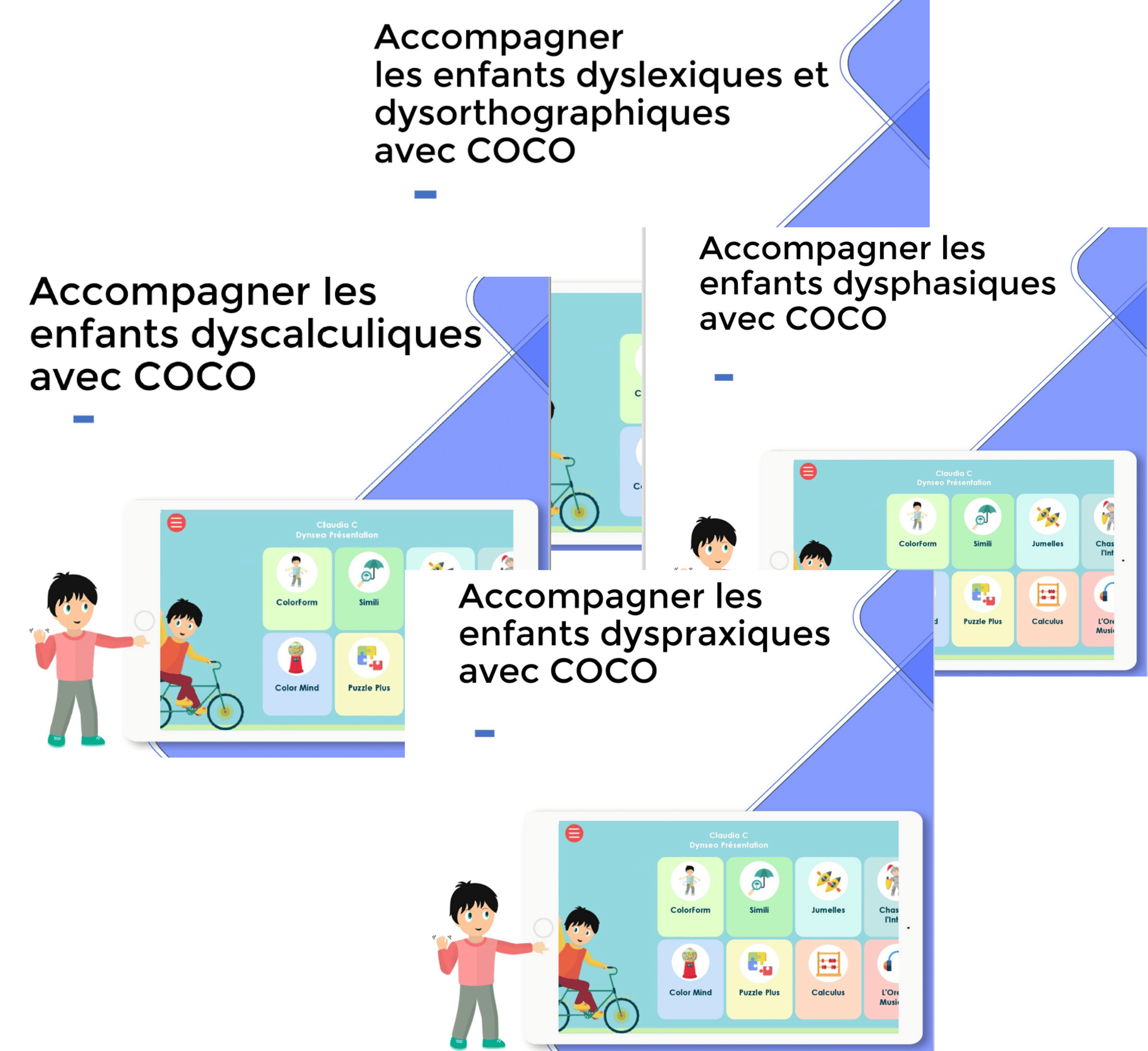
Language rehabilitation
Once the cause of the language difficulties has been defined, a support project is set up. The aim of language re-education is to put in place strategies to correct or compensate for the child’s difficulties. The earlier the difficulties are identified and the earlier the child is treated, the better the future results.
Depending on the child’s needs, he or she will be cared for by one or more health professionals. In most cases, the child is treated by a speech therapist. In addition, the child may also receive psychomotor therapy, occupational therapy or orthoptic rehabilitation. When the disorders are more severe or when the child is older, it may be necessary to involve a psychologist.
Language rehabilitation does not only focus on the function of language, but also on the emotional side. Indeed, language disorders can impact and influence the child’s emotional state. They may lose self-confidence, feel uncomfortable during reading activities or isolate themselves to hide their difficulties.
Speech therapy
Language therapy for children always involves a speech and language therapist. Sessions with the speech and language therapist should be regular, but it is important to have support from the family and the school. The therapy gives the children strategies, and they have to put them into practice in everyday life.
Before starting a course of therapy, the speech and language therapist should carry out an assessment. This assessment enables the identification of the child’s weaknesses and the planning of the best course of action for language training.
The frequency of sessions and duration of treatment will be different for each child, depending on their needs and difficulties. The project can also be modified according to the child’s progress.
Activities to do at home
When there is a speech or language delay, the child is given a few months to see if he or she recovers the delay or if the gap with other children increases. Sometimes the child just needs time to develop his or her skills. However, you should not minimise a difficulty. In this case, you can do preventive activities. If there is already a definite language problem, you can do reinforcement activities.
When the child is small it is important to talk directly to him/her, not just beside him/her. You should give them time to respond to you and rephrase your sentences if you see that the child has not understood.
COCO THINKS and COCO MOVES,
the educational and physical app
COCO THINKS and COCO MOVES is an educational and physical app for children from 5 to 10 years old. In this app, you can find more than 30 educational games to work on all cognitive functions. This application can be used directly by the speech therapist during the sessions or at home between sessions.
The games are varied so the child can improve his memory, attention, logic and language. With 3 levels of difficulty, the games can be adapted to the child’s needs.
Of course you can find games that work on language within the COCO THINKS and COCO MOVES app.
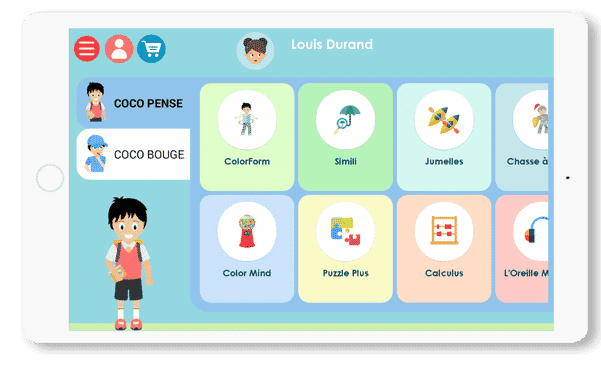
Syllabus
Find the words from the syllables present.
This game is suitable for younger children as it works on the sound of words. The child has to think about the sounds that make up a word, improving his or her phonological skills. Depending on the level of difficulty, the child has to start from the word to find the syllables that make it up or do the reverse.
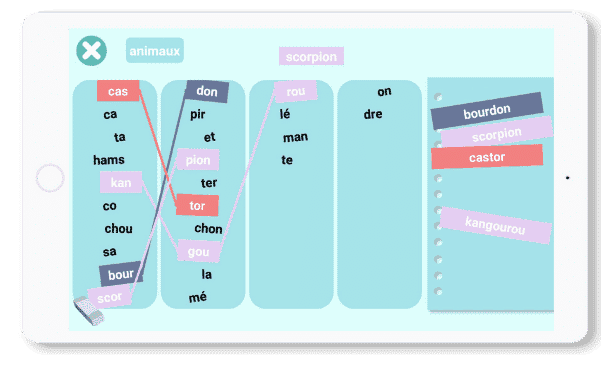
Hunting Intruders
Find the intruder among the propositions. This game is suitable for younger children as it works on the sound of words. The child has to think about the sounds that make up a word, improving his or her phonological skills. This game is therefore recommended for children who already have a large vocabulary.
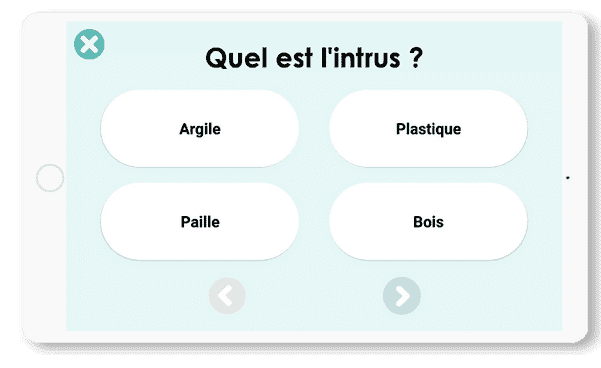
Brain Storm
Construct the sentence from the words presented. In this game your child will work on sentence structure and the logical order of words. This game is designed for children who already have a more complex language. Ce jeu est donc conseillé aux enfants qui ont déjà un vocabulaire plus ample.
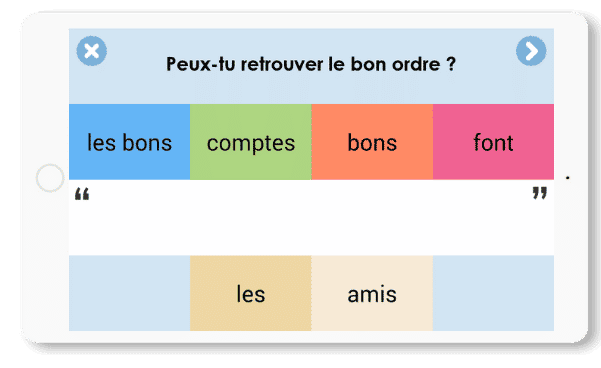
COCO THINKS and COCO MOVES, the education and physical app
The COCO app imposes a sports break after 15 minutes of screen time. This allows them to air their brains, and then to be more focused!
Alternating educational and physical activities is very important for children to keep them motivated throughout the session.
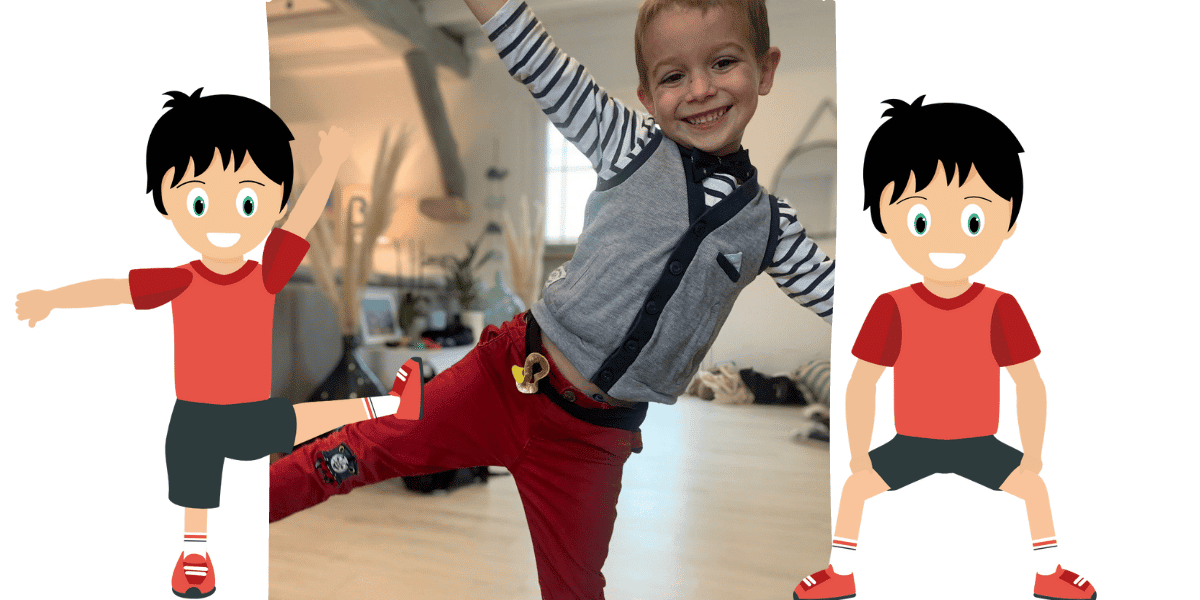
Taking regular breaks is important to allow the brain to air out and process the information received.
Note that it is also possible to use the app only with sports activities, to adapt the games to your child. Personalize his experience and teach him to focus.
COCO MOVES’ PHYSICAL GAMES
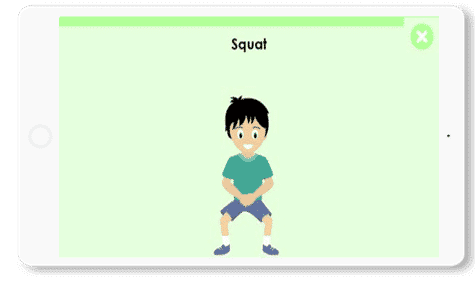
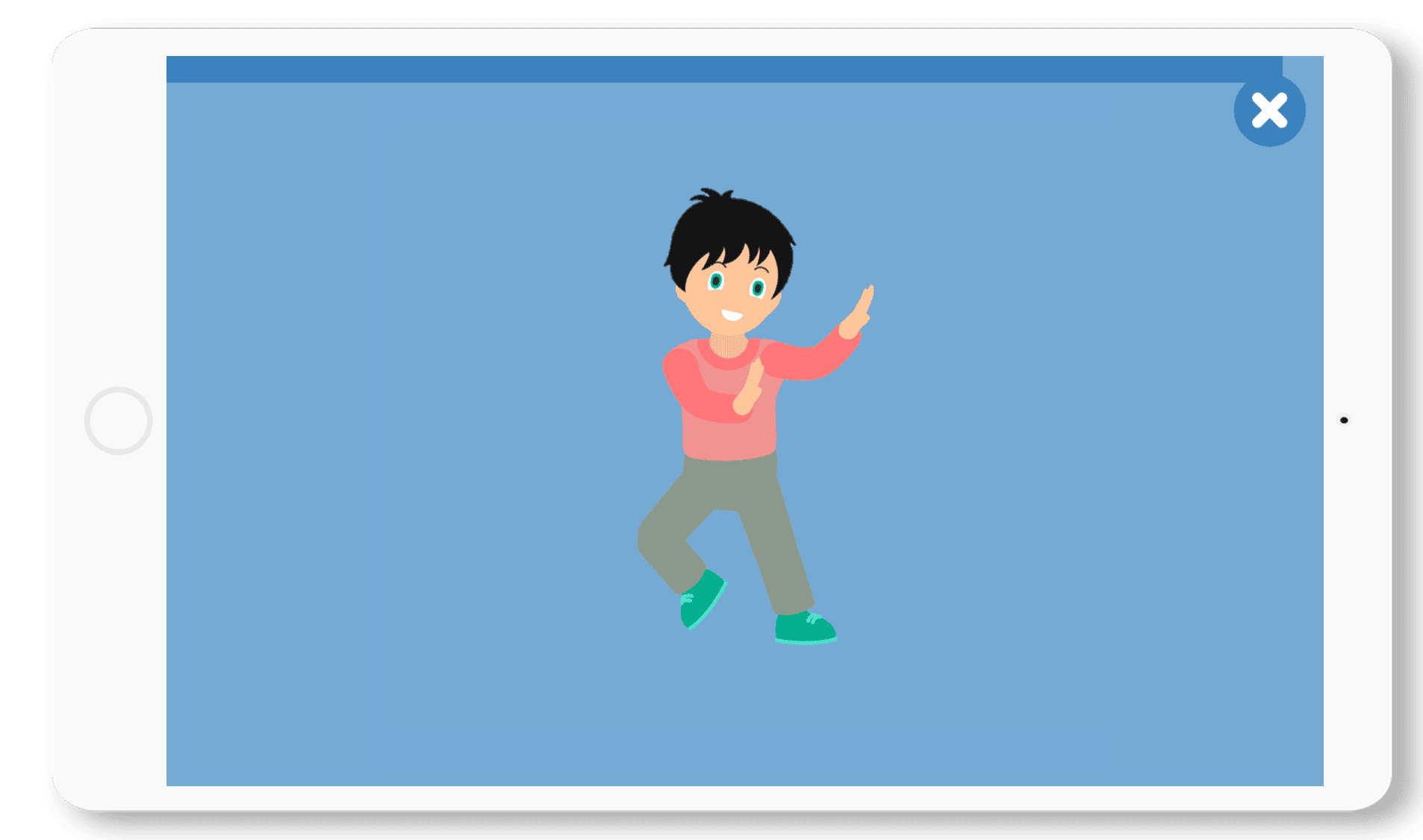
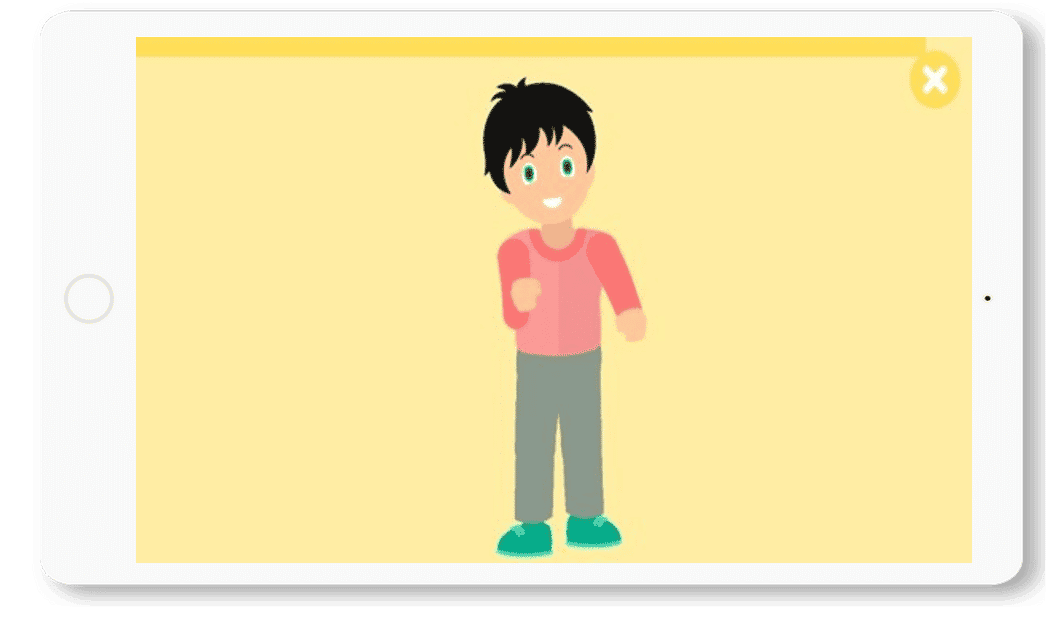
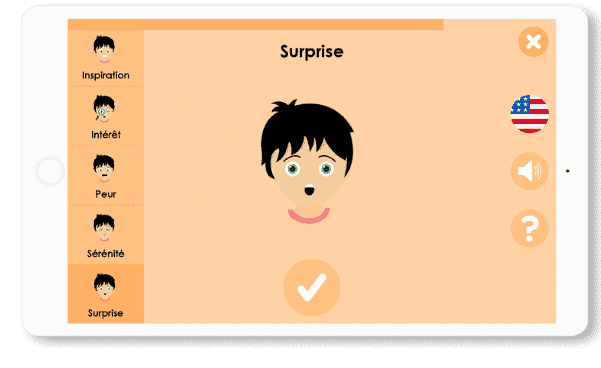
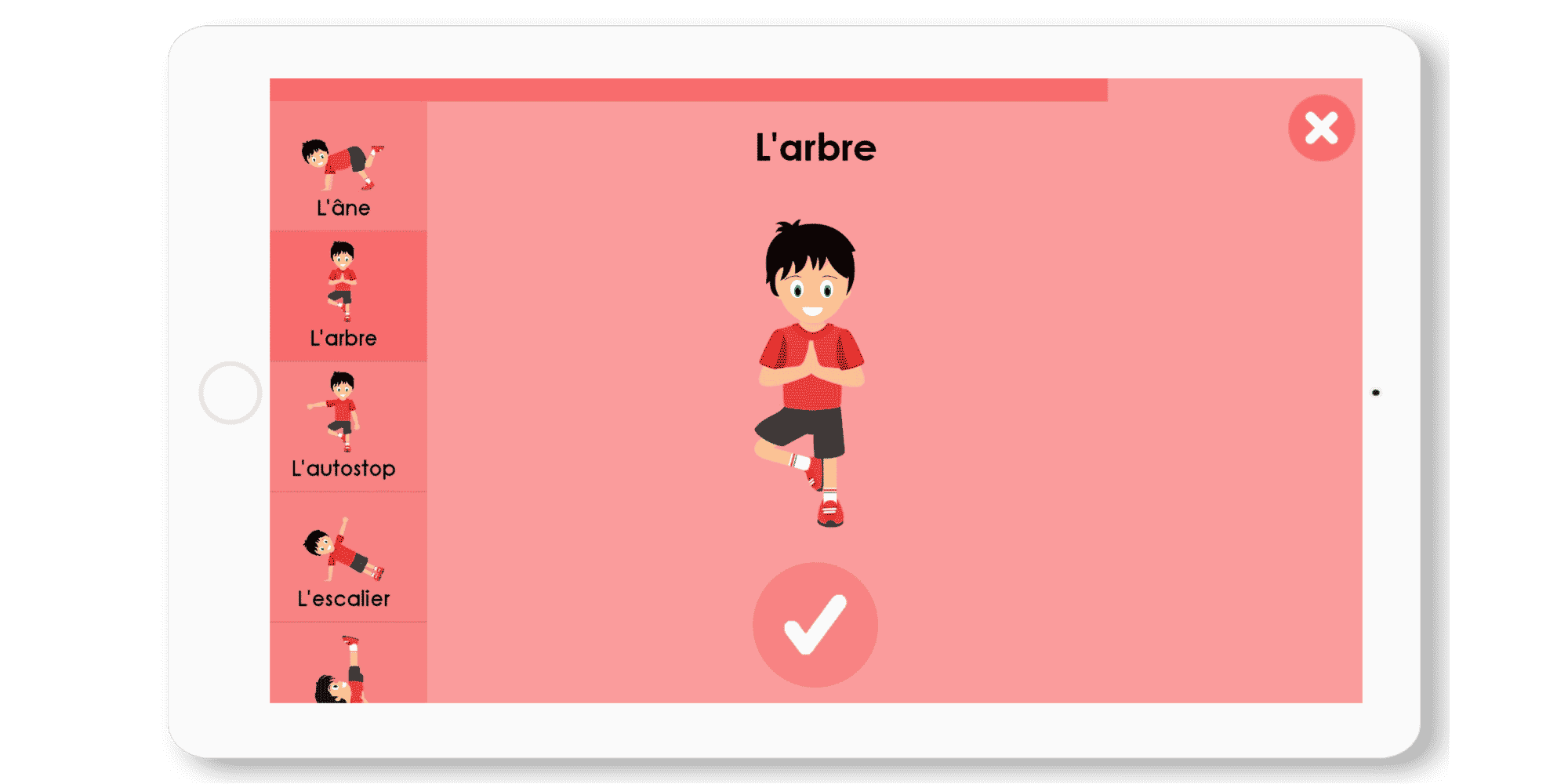
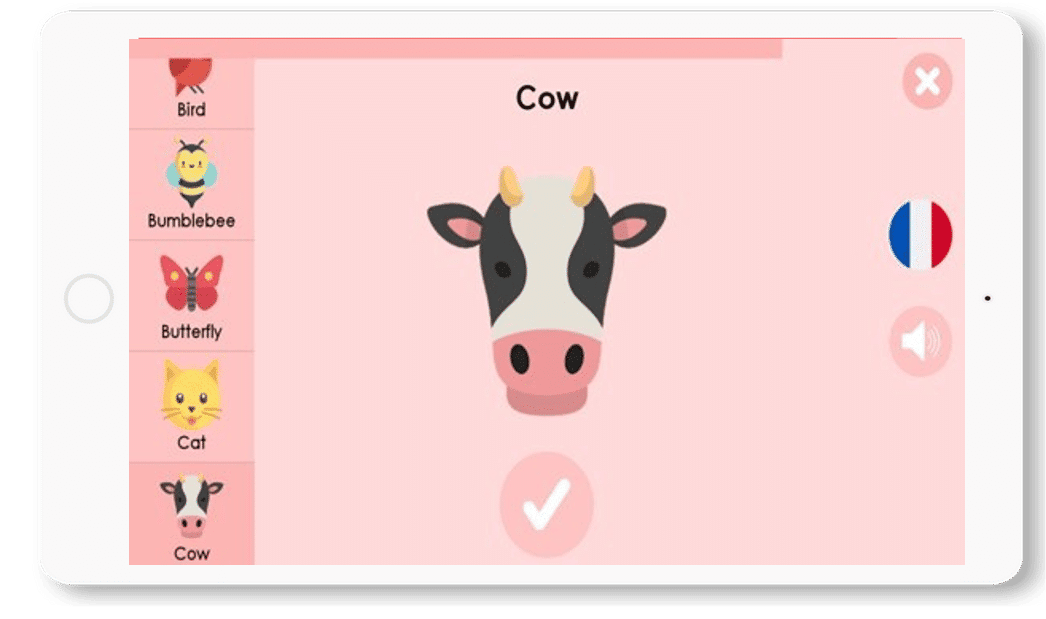
3 MOIS
- Suivi des performances
- Mises à jour mensuelles
- Accompagnement client
- Pas de renouvellement automatique
15 EUROS
1 AN
- Suivi des performances
- Mises à jour mensuelles
- Accompagnement client
- Pas de renouvellement automatique
40 EUROS
LA POCHETTE SURPRISE
- Abonnement COCO – 1 an
- Un calendrier pour 1 an de bonnes actions
- Un bracelet pour 1 an de belles aventures
- et plein d’autres surprises
55 EUROS
TABLETTE COCO 1 AN
- Une tablette Lenovo M7, 7 pouces, 16 GO
- Abonnement COCO 1 an inclus
- D’autres apps éducatives
- Une interface simplifiée
158 EUROS
Other articles that might interest you:
Fine Motor Techniques: Games and Exercises for Children with Dyspraxia.
Dyspraxia, also known as developmental coordination disorder, is a neurological disorder that affects the planning and...
10 Effective Pedagogical Strategies to Support Children with DYS Disorders.
Children with DYS disorders face many challenges in their educational journey. They may have difficulty reading and...
The Role of Audio Books in the Learning of Dyslexic Children.
Dyslexic children face many difficulties when it comes to reading. The first problem they face is decoding, i.e. the...


